
Non-native fish predation on salmon, especially endangered Chinook salmon smolts and Kokanee Salmon, is an identified source of significant mortality on these populations.
A 2019 study conducted by King County on the fish assemblage of Lake Sammamish showed that a majority of the fish collected were non-native. Many of these non-native fishes are highly piscivorous (Small and Largemouth Bass and Yellow Perch) and utilize the nearshore habitat as spawning, rearing, and ambush habitat.
Trout Unlimited conducted a pilot aquatic weed removal project in 2021 in Lake Sammamish and found that areas that had the weeds removed had 4.5x less gamefish than non-treated areas.
Many thanks to Council Member Claudia Balducci and the King County Council for funding this pilot project.


Pilot Study:
This Pilot Study occurred in the Summer of 2021, where TU hired SeaScapes NW to remove non-native aquatic vegetation with Diver Assisted Suction Harvesting (DASH) from three (3) locations in Lake Sammamish. Treatment sites were 70 meters in shore length and extended offshore to the extant of aquatic weed prevalence (6 meters of depth). Treatment sites were paired with nearby control sites that were spatially separated by 100 meters. TU and Seascapes removed 120 Yards of vegetation weighing approximately 24,000 lbs (see picture above).
Post weed removal, TU and King County staff conducted two repeated SCUBA visual fish surveys on transects (75 meters) at 11 feet and 22 feet of depth in each "Treatment" and "Control" Sites. Surveyors noted fish abundance by species by site and transect.
Survey Results:
- 9821 fish observations made with only two (2) fish being native to the Lake.
- Control area observations - 8021 fish total (82%)
- 6763 fish observed @ 11 foot depth
- 1257 fish observed @ 22 foot depth
- Treatment area observations - 1801 fish total (18%)
- 1411 fish observed @ 11 foot depth
- 390 fish observed @ 22 foot depth
- Majority of fish observed @ 11 foot depth associated with weed clumps missed in removal process.
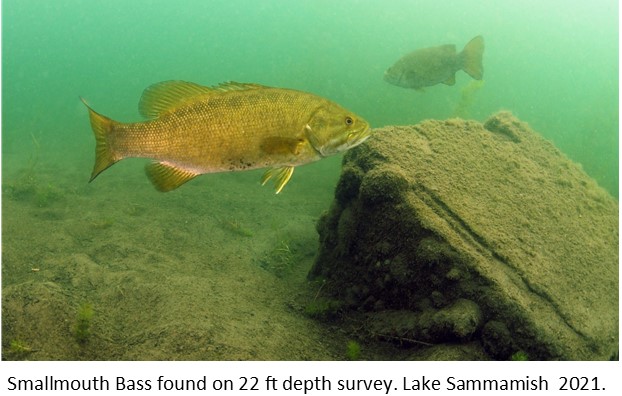
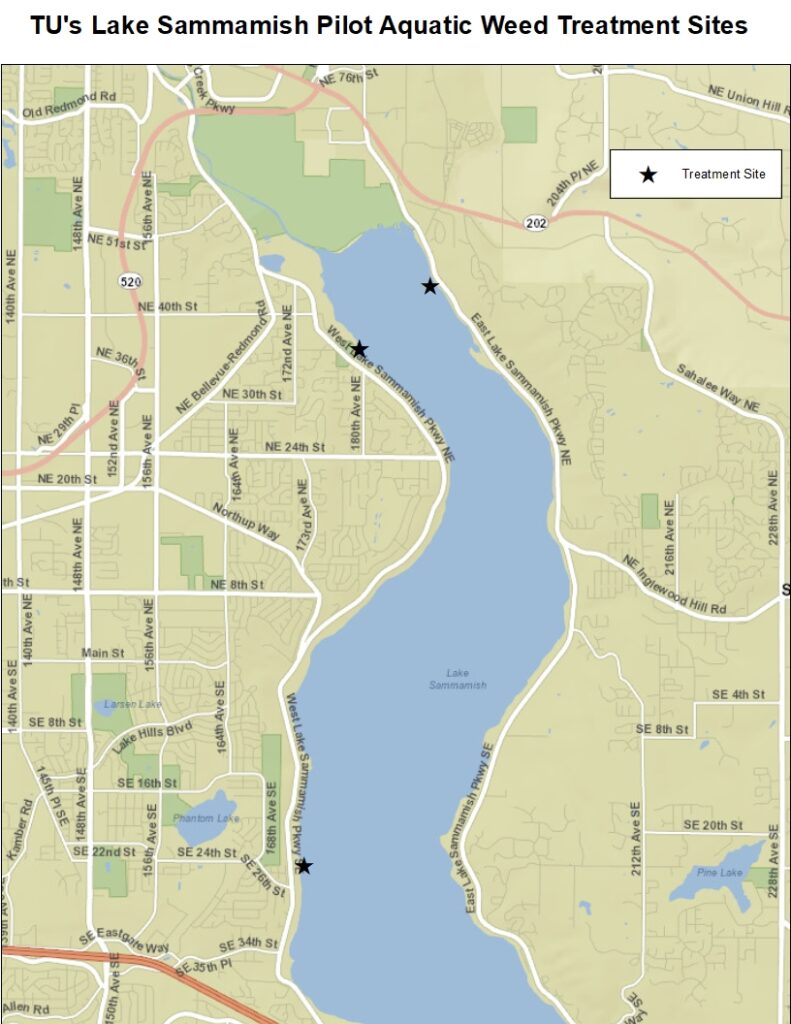
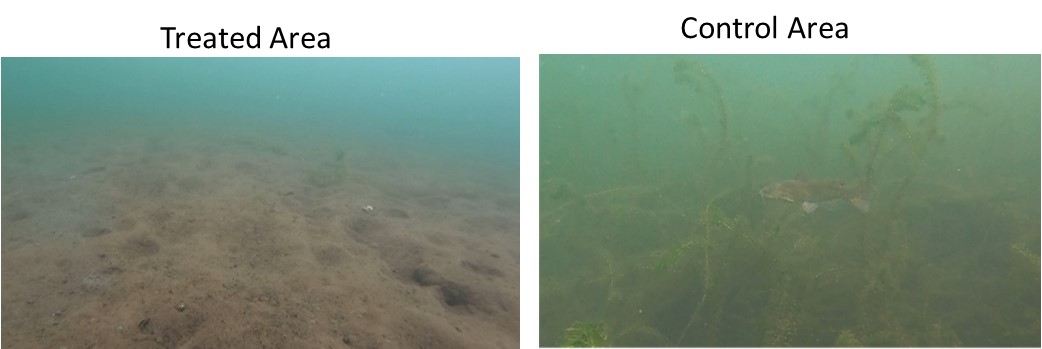
Weed Problem:
Eurasian Milfoil (Myiophyllum spicatum) and Brazilian elodea (Egeria densa) are noxious non-native aquatic weeds that have spread thoughout the entire Lake Washington Basin. These nuisance aquatic weeds form a dense canopy and shades out native plant populations within the entire shoreline littoral zone. The consequences of infestation by these plants have been well studied in other systems in regard to the negative effects on water quality, native plant communities, macroinvertebrate populations, aquatic ecosystem health, recreation, and even property values.
However, results of aquatic weed control on fish assemblages are largely anecdotal and require further investigation to be evaluated as a potential tool for salmon recovery in Lake Sammamish.
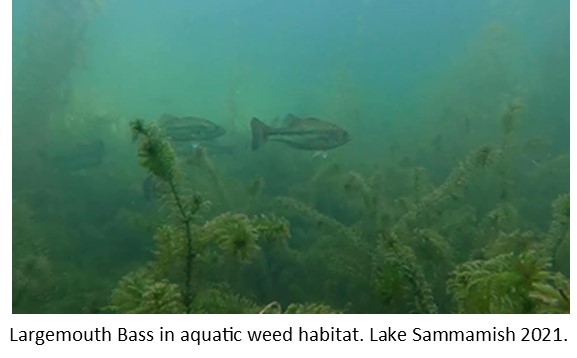
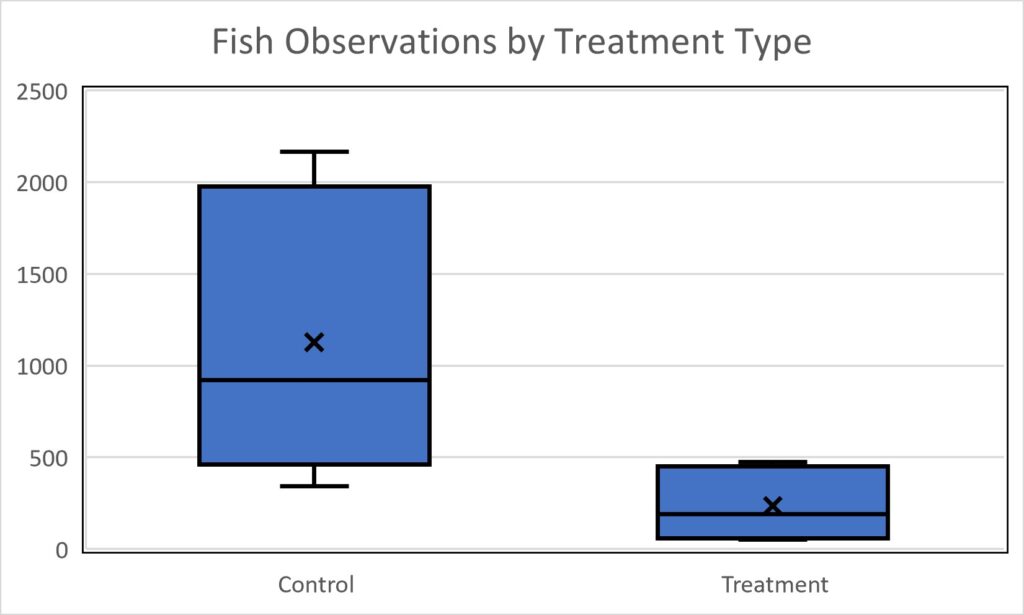

Next Steps
- Increase the number and size of treatment areas to add weight to the initial findings.
- Adjust Survey Transects to capture data relevant to weed removal. We found that the 22 ft depth was beyond the growth range of these weeds and only captured an edge effect.
- Treat areas adjacent to important stream mouths. it is believed that salmon utilize these areas to rest and forage which allows predation from nearby predators in the weeds.
- Evaluate the effectiveness and risks of herbicides.
- Evaluate the water quality impacts of aquatic weeds in Lake Sammamish.

